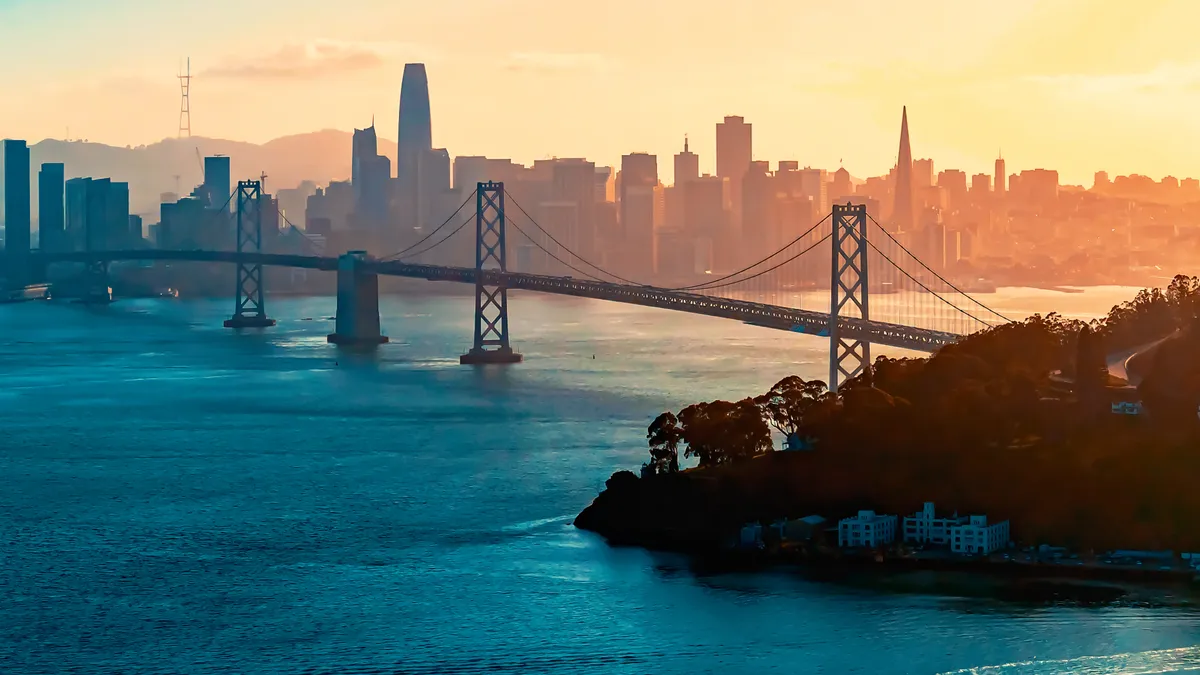Dive Brief:
- As California lawmakers gear up to vote on a legislative proposal from Gov. Gavin Newsom, D, to extend the life of the Diablo Canyon nuclear plant, stakeholders remain divided on the pros and cons of the plan.
- The final version of the Newsom administration’s proposal would provide the state with the option to extend the plant’s two units – originally scheduled to shut down in 2024 and 2025 – for another five years. It also reflects improvements based on feedback from lawmakers, according to the administration, including strengthening state oversight and lowering ratepayer costs.
- However, some stakeholders remain opposed to the plan. “This last-minute legislation would give new life to an aging nuclear power plant that is badly in need of seismic upgrades and other repairs to ensure safe operation,” Juliet Christian-Smith, western states regional director with the Union of Concerned Scientists said in a statement Tuesday.
Dive Insight:
Although Diablo Canyon’s operator, Pacific Gas & Electric, has been preparing to shutter the plant in 2024 and 2025, two factors led to a reversal in state policy, according to Newsom’s office: global supply chain constraints have delayed new renewable and storage projects, and a $6 billion federal program that could help extend the nuclear facility’s life.
However, the federal program also places a strict deadline on the effort to keep the Diablo Canyon plant open. PG&E will need to apply for the funding by Sept. 6, and lawmakers would need to vote on Newsom’s proposal this session, which ends Wednesday.
The proposal, SB 846, keeps the option of extending Diablo Canyon through October 31, 2029, for Unit 1 and October 31, 2030, for Unit 2 on the table, according to the administration. If regulators conclude that enough new renewable resources come online to ensure grid reliability, the plant will not be extended. It would also authorize a $1.4 billion loan to PG&E to relicense the plant. The federal government is expected to cover most, if not all, of the cost of the loan, according to Newsom’s office.
Support for keeping the plant online has grown in recent months. The California Public Utilities Commission’s Public Advocates Office supported the proposal Monday in a fact sheet that said its “robust ratepayer protections would create both statutory and administrative checks and balances.”
Specifically, the office pointed to certain provisions that it said would protect ratepayers, including “significant cost sharing” from the federal government and state revenues to reduce ratepayer expenditure, and spreading system costs across a wide customer base.
Sen. Dianne Feinstein, D, also urged lawmakers to pass the legislation, noting in a letter on Tuesday that despite massive investments, development of wind, solar and geothermal resources are not projected to be installed in time to replace the Diablo Canyon plant.
“At this time, the alternative to the closure of the reactors at Diablo Canyon will most likely be additional natural gas generation, which would reverse progress on emissions reductions and worsen air quality. The state would be better served by a temporary extension of an existing carbon-free resource,” she said.
In addition, Clean Air Task Force President Armond Cohen co-signed a letter urging California policymakers to keep the plant online.
“[N]o one can deny that letting existing, well-functioning reactors like Diablo Canyon remain in service keeps fossil fuels in the ground and their carbon emissions out of our atmosphere. We ignore that benefit at our peril,” the letter stated.
But groups like the UCS and The Utility Reform Network remain concerned about the plan and the limited time to review it. Introducing a final version of the bill 76 hours before the end of the legislative session, without the benefit of adequate public review or an analysis of alternatives, is “misguided,” according to UCS’ Christian-Smith.
Given the limited time for review, it is not clear to TURN that the bill adequately protects ratepayers from unnecessary and unreasonable rate increases, Executive Director Mark Toney agreed in an email.
“Lawmakers need more time to ensure the bill is drafted to avoid any unintended consequences and will protect ratepayers from paying for any PG&E mismanagement. There are many other problems and questions with the language in this proposal that must be addressed to protect ratepayers at a time when there is a recognized crisis of affordability,” Toney said.














